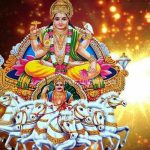The Christmas is here, which means that Nativity scenes have begun popping up every where across the world, shops, restaurants, homes! But what exactly is Nativity Scene? What goes into it? When did it all start? Let us decipher the ‘Nativity Scene.
History
Tradition says that Francis of Assisi created the very first Christmas nativity scene in AD 1223 after a trip to the Holy Land and Christ’s birthplace. So began a new tradition that took root in many Western countries. Today, we can see nativity scenes in front of churches and homes, on street corners, and in pageants every Christmas season.
What is Nativity Scene
The word nativity is taken from the Latin nativus, which means “arisen by birth.” A nativity scene is a representation of the night of Jesus’ birth as depicted in the Gospels of Matthew and Luke. Nativities can be pictures, models, live demonstrations, or carvings, but they usually contain the same elements: the Christ Child in a manger; His mother, Mary; His earthly father, Joseph; shepherds; angels; various barn animals; a star; and, sometimes, three wise men bringing gifts. A nativity scene is most often set inside a stable or cave.
Displaying a Christmas nativity scene is a long-standing tradition, but it can also present a bit of a skewed view of the actual events of Jesus’ birth. While each person depicted in a traditional nativity scene is a part of the Christmas story, not all the characters were present in one place on the night Jesus was born. Mary, Joseph, and Jesus were in a stable that night due to the overcrowding in Bethlehem’s inn (Luke 2:7), but the Bible never mentions whether or not animals were present—in fact, it never even mentions a stable. The shepherds, once told of Jesus’ arrival, left their flocks to worship the newborn King (Luke 2:16). However, the angels, which are often part of nativity scenes, bore the good news to the shepherds in the fields (Luke 2:8–14). As far as we know, there were no angels flying visibly over the place where Jesus was when the shepherds arrived. In addition, the wise men (the Bible never says how many there were) were also probably not present that first night. The magi visited Jesus some time later, when He was in a house (Matthew 2:1–11).

What does Nativity Scene Consist of?
The Baby Jesus: The Baby Jesus is the main event. He is why all these camels and people have traveled to the manger, for He is a very special child—the Son of God!
The Virgin Mary: At the center of the miracle of the Nativity is Jesus’ mother, Mary, the virgin who conceived a child of the Holy Spirit.
The Virgin Joseph: Also present near the Baby Jesus is Mary’s husband, the Virgin Joseph. Like Mary, the Virgin Joseph also became pregnant through the will of God, and the tale of the remarkable virgin birth he delivered.
The Magnificent Three: No Nativity scene is complete without the Magnificent Three, a team of magicians who traveled to the birthplace of the Baby Jesus to worship Him and bring Him gifts.
The Whispering Camels Of Nazareth: One of the most important components of the Nativity scene is the presence of the Whispering Camels of Nazareth, the holy camels who approached Jesus’ manger one at a time to whisper a holy message to the Son of God.
The Shepherd: Most Nativity scenes feature the shepherd, who was said to have traveled from a nearby village in order to witness the birth of the Son of God.
The Star: According to the Bible, the Magnificent Three were able to find the Baby Jesus by following a star that appeared above the stable.
The Donkey: While the donkey’s role in the Nativity scene is largely unknown, his presence is absolutely essential, for as the final line of the Nativity story states in Luke 2:22: “And if you don’t think a donkey was there then you are a bitter enemy of God.”
Despite these small details, a Christmas nativity scene is a wonderful reminder of what happened the night Jesus was born. Modern Christmas nativity scenes help to proclaim Christ’s birth and the true “reason for the season.”









